 |
Know-How Photography, Scanning, Image Editing
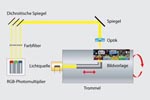
There is a big choice of different types for scanning negatives and slides. For a better overview the market is devided into different device classes. These classes contain for example film scanners, flatbet scanners with transparency unit, CMOS scanners and drum scanners. On this page we present the device classes relevant for scanning negatives and slides in detail and explain the particular functional principle. Also we explain the principial advantages and disadvantages of the particular class. In manny cases only the membership of a device class tells a lot about the performance of a scanner.

How is a film scanner beeing connected to the computer? A computer offers normally a lot of different interfaces, which differ mainly in the data transfer rate and in the cable length. Since modern film scanners have to transfer several hundreds megabytes of data to the computer when doing a high resolution scan, a high data transfer rate of the interface is necessary, in order not to delay the scanning times unnecessarily. On our website about interfaces we show you, which kind of interfaces there are available and which performance data they have. Especially we compare the popular USB interface with the also popular firewire interface.
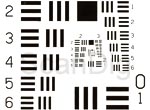
On the data sheets of film scanners and flatbed scanners there are given astronomical resolutions like 7200 dpi or 9600 dpi. In practice many scanners yield not even the half of the nominal resolution. The consequence are huge, bloated image files, which have to be compressed after scanning. On our page about the topic scanner resolution we first explain important basics about the resolution topic, then we explain the composition of a USAF 1951 test target and finally show you step by step how to determine the resolution of a film scanner or a flatbed scanner with a USAF-1951 test target. With the help of our conversion tables you can finally measure the effective resolution of your scanner by yourself.
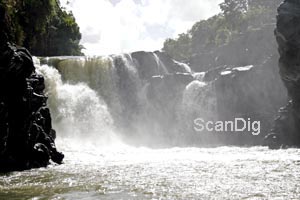
The density range and the maximum density range respectively are one of the most important performance criteria of film scanners and flatbed scanners. A high density range means that an image can be scanned with all colour nuances and that both in the shadows and in the lights there is still enough drawing. On our page about density and density range we first derive the terms opacity and density physically and then go into the scanner and digital camera practice. In this context we also go into the relationship between density range, contrast range and aperture steps.
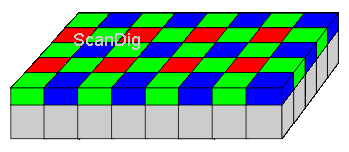
In almost all film scanners and digital cameras there work CCD sensors, in film scanners it's CCD lines, in digital cameras it's CCD chips. On this page we explain in detail how CCD sensors are constructed and how they work. We start with the basics of semiconductor technology, then treat the photoelectric effect (conversion of light into current) and finally explain the funcional principle of an analogue-digital-converter and colour filter systems. Also we explain you, how CCD chips in digital cameras and CCD line sensors in film scanners are constructed, and how they generate image files from the measured currents.
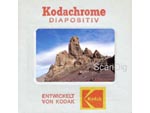
Scanning Kodachrome films is a very special and difficult task, in which many film scanners and flatbed scanners with transparency unit fail miserably. Only a few film scanners are able to scan Kodachromes in a good quality, and only a single one is able to digitize them in a very good quality. On our page about Kodachromes we first explain, what a Kodachrome film is and how to determine it. Then we go into detail about scanning Kodachrome films and treat the specific problem of the hardware based, infrared based automatic scratch and dust correction. With numerous image examples we demonstrate which problemes normal film scanners have with Kodachrome films.
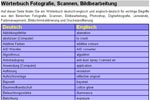
When investigating in the internat, reading special literature, and studying manufacturer infos in the fields of photography, image editing and colour management, again and again one finds English terms, which one does not know in the German language. Who knows that aberration means Abbildungsfehler in German? In our technical dictionalry German-English, English-Terman we have alphabetically sorted more than 200 important terms in the fields of photography, image editing and colour management. Even when just going through the dictionary again and again one findes an interesting term, which one often uses but not knows how to translate it.
|
 |